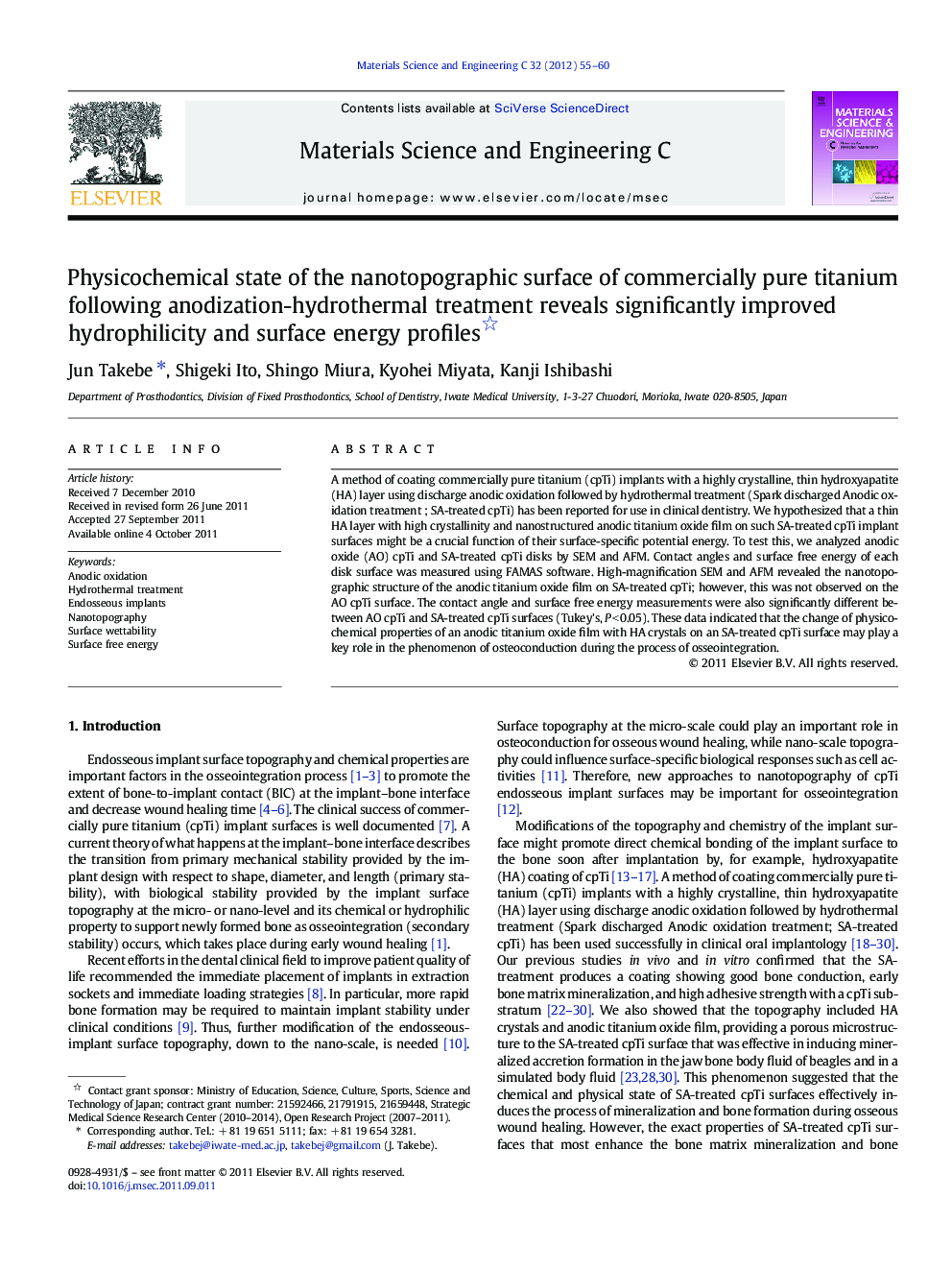| Article ID | Journal | Published Year | Pages | File Type |
|---|---|---|---|---|
| 1429785 | Materials Science and Engineering: C | 2012 | 6 Pages |
A method of coating commercially pure titanium (cpTi) implants with a highly crystalline, thin hydroxyapatite (HA) layer using discharge anodic oxidation followed by hydrothermal treatment (Spark discharged Anodic oxidation treatment ; SA-treated cpTi) has been reported for use in clinical dentistry. We hypothesized that a thin HA layer with high crystallinity and nanostructured anodic titanium oxide film on such SA-treated cpTi implant surfaces might be a crucial function of their surface-specific potential energy. To test this, we analyzed anodic oxide (AO) cpTi and SA-treated cpTi disks by SEM and AFM. Contact angles and surface free energy of each disk surface was measured using FAMAS software. High-magnification SEM and AFM revealed the nanotopographic structure of the anodic titanium oxide film on SA-treated cpTi; however, this was not observed on the AO cpTi surface. The contact angle and surface free energy measurements were also significantly different between AO cpTi and SA-treated cpTi surfaces (Tukey's, P < 0.05). These data indicated that the change of physicochemical properties of an anodic titanium oxide film with HA crystals on an SA-treated cpTi surface may play a key role in the phenomenon of osteoconduction during the process of osseointegration.
► Anodization-hydrothermal treatment of titanium implant has nanotopographic surface. ► This SA-treated implant has a crucial function of surface-specific potential energy. ► This surface has higher levels of hydrophilic, wettability, surface free energy. ► This surface also has a higher affinity, hydrogen bond number, and polarization. ► Physicochemical properties of this surface play key roles in osseointegration.
